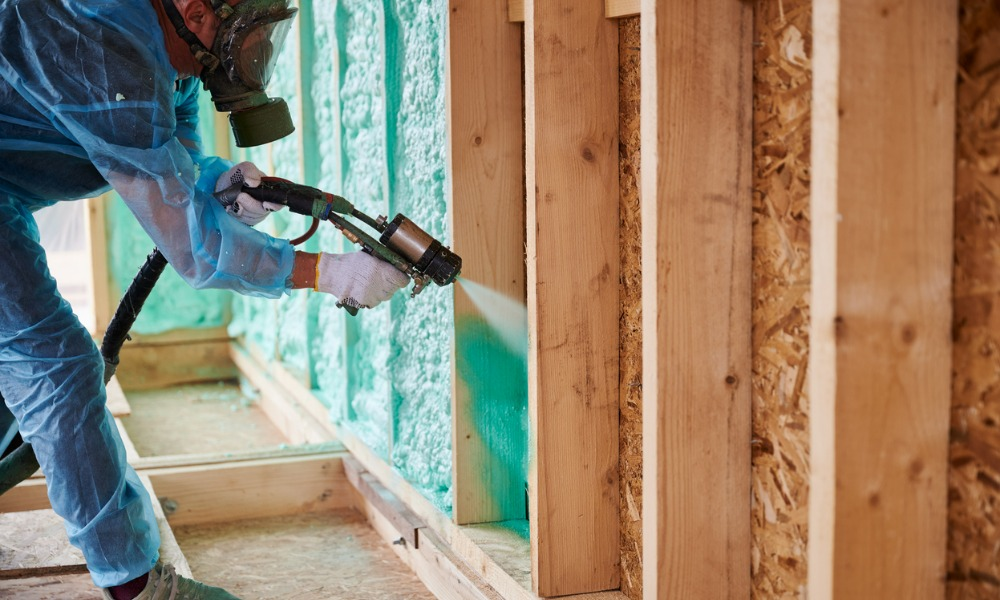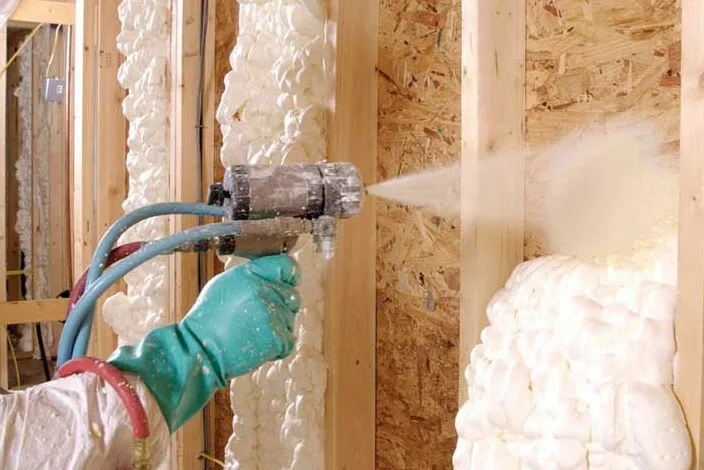Why Spray Foam Is a Top Choice for Home Insulation
Spray foam insulation remains a preferred choice for homeowners due to its unmatched ability to create a tightly sealed thermal envelope. It provides superior energy efficiency, controls air movement, reduces moisture intrusion, and lasts for decades with minimal degradation. For homes in varying climates and structural conditions, spray foam’s performance consistently exceeds that of traditional materials.
What sets it apart is its capacity to expand and harden after application, filling every corner, gap, and crevice—something batts, rolls, or blown-in insulation can’t achieve. Its high R-value and air barrier properties contribute to lower heating and cooling loads, helping homeowners maintain consistent indoor temperatures while reducing energy expenses.
This article explains in depth why residential spray foam insulation installation provides the best material for many homes today. It covers technical comparisons, material differences, and practical considerations to guide informed decisions.
Performance Comparison of Insulation Materials
| Feature/Type | Closed-Cell Spray Foam | Open-Cell Spray Foam | Fiberglass Batts | Cellulose | Mineral Wool |
|---|---|---|---|---|---|
| R-Value (per inch) | 6.5 – 7.0 | 3.5 – 4.0 | 2.9 – 3.8 | 3.2 – 3.8 | 3.7 – 4.3 |
| Air Sealing | Excellent | Excellent | Poor | Fair | Good |
| Moisture Resistance | High | Low | Low | Moderate | High |
| Lifespan | 30+ years | 20+ years | 10–20 years | 20–30 years | 30+ years |
| Sound Dampening | Moderate | Excellent | Moderate | Good | Excellent |
| Structural Reinforcement | Yes | No | No | No | No |
| Application Complexity | Professional only | Professional only | DIY possible | DIY possible | Professional only |
Understanding Spray Foam’s Technical Edge
Closed-cell spray foam is denser and forms a rigid structure when cured. Its high R-value per inch makes it suitable for places where space is limited but high thermal performance is required. It also strengthens walls and resists water infiltration, making it a strong choice for foundations, exterior walls, and roofs.
Open-cell foam, on the other hand, is more flexible and better at sound absorption. It expands more than closed-cell foam, reaching into narrow cracks and offering a softer, more breathable insulation layer. Though it has a lower R-value, it still seals air leaks better than batts or loose-fill materials.
Spray foam’s performance isn’t just theoretical. Its expert air sealing insulation solution for properties have been field-tested and verified through building audits. Homes insulated with spray foam typically see fewer drafts, lower humidity fluctuations, and reduced airborne pollutants like dust or pollen.

Air Sealing and Moisture Control
Air infiltration is one of the primary causes of energy loss in residential buildings. Small gaps around windows, electrical outlets, plumbing penetrations, or poorly sealed attic hatches allow conditioned air to escape and unfiltered outdoor air to enter.
Spray foam insulation solves this by expanding on contact, bonding to virtually any surface, and forming a continuous barrier. This prevents outside air from leaking in and inside air from escaping—something batt and blown insulation can’t fully achieve on their own.
This air barrier also plays a key role in moisture control. Uncontrolled airflow often carries water vapor into walls, leading to mold growth, wood rot, and compromised structural integrity. Closed-cell spray foam forms a vapor barrier in addition to being waterproof, offering protection in humid or flood-prone regions. Open-cell foam allows vapor diffusion, which can be useful in assemblies designed to dry inward.
Energy Efficiency and Cost Savings
Most homes using spray foam insulation experience a 25–50% reduction in energy bills compared to those with conventional insulation. These savings result from reduced HVAC run-time, less frequent maintenance, and more stable indoor temperatures throughout the year.
The upfront cost of spray foam is higher than that of fiberglass or cellulose, but it typically pays off within a few years. More importantly, the savings compound over time. Lower energy use translates to a smaller environmental footprint and protection from future utility rate increases.
Because spray foam improves the overall thermal envelope, HVAC equipment size may also be reduced. In some homes, this leads to savings on installation or replacement costs for furnaces and air conditioning systems.
Things to Consider Before Making a Decision
Before choosing spray foam for your home, it’s important to evaluate your building’s structure, climate, and long-term energy goals.
Climate zone plays a major role. In hot, humid climates, closed-cell foam helps reduce moisture and heat gain, especially in attics and walls. In colder climates, its high R-value provides thermal protection while reducing ice dam risks when used under roof decks.
Wall cavity depth is also a factor. If space is tight, closed-cell foam provides higher R-values with less material. Open-cell foam, though thicker, is easier to shape into irregular cavities.
Installation must be done by trained professionals who follow safety protocols and building codes. During installation, residents should vacate the property until the foam has cured and any off-gassing has dissipated. If not installed properly, issues like shrinkage, cracking, or poor adhesion can affect performance.
Another consideration is compatibility with your existing insulation. If your home has older batt or blown-in insulation, it might need to be removed to prevent moisture traps or uneven coverage.
Some homeowners also weigh environmental impact. While traditional spray foam relies on petroleum-based chemicals, newer products use water-based or low-GWP blowing agents that reduce environmental impact.
Common Questions
Can spray foam be applied to all areas of the home?
Yes, spray foam can be applied in attics, crawlspaces, exterior walls, basements, rim joists, and even under floors. Closed-cell foam is preferred in areas exposed to moisture or where additional strength is needed, while open-cell is often used in interior walls or ceilings for sound control.
Is it safe to live in a home with spray foam insulation?
Yes, once fully cured, spray foam is inert and safe. However, during application, residents should leave the property for 24 hours to avoid chemical exposure.
What’s the difference between open-cell and closed-cell spray foam?
The main differences are density, R-value, and moisture resistance. Closed-cell is denser, provides a higher R-value per inch, and resists water. Open-cell is softer, offers better sound dampening, and is more vapor permeable.
Can spray foam insulation reduce outside noise?
Open-cell spray foam is highly effective at absorbing sound, making it a good choice for walls between living spaces or along busy streets. Closed-cell foam also reduces sound transmission, though to a lesser extent.
How long does spray foam last?
Spray foam typically lasts 30–50 years without losing performance, provided it’s installed correctly. It resists settling, shifting, and deterioration better than other insulation materials.
Additional FAQs
Q1: Can I use spray foam on existing walls without tearing them down? A: Retrofits are possible, especially with open-cell foam, which can be injected through small holes. However, results may vary based on wall structure and access.
Q2: Does spray foam need a vapor barrier? A: Closed-cell spray foam often acts as its own vapor barrier. In some assemblies, additional vapor control layers may be required depending on climate and building code.
Q3: Will rodents chew through spray foam like other insulation? A: While no insulation is completely rodent-proof, spray foam does not provide food or nesting material, making it less attractive to pests.
Q4: Can it be painted or covered after installation? A: Yes, once cured, spray foam can be trimmed, painted, or covered with drywall. Exposed foam should be coated with a thermal barrier to meet fire safety requirements.
Q5: Is spray foam suitable for historic homes? A: Yes, but care is needed. Improper sealing in older structures without ventilation pathways can trap moisture. Always consult a specialist experienced with historic retrofits.

Final Thoughts
Professional installation of Spray foam stands out for its durability, efficiency, and long-term cost effectiveness. It outperforms most alternatives in sealing, R-value, and moisture resistance, making it an ideal choice for homeowners looking for high-performance insulation.
Though the installation cost is higher than other methods, the benefits—air sealing, moisture control, structural support, and energy savings—quickly outweigh the expense. It suits both new construction and energy retrofit projects, provided installation is performed professionally and site conditions are fully assessed.
Each home has different needs. Before committing to spray foam, review your climate zone, wall structure, moisture exposure, and insulation goals. With thoughtful planning, spray foam delivers comfort, efficiency, and protection for decades.
Reviewer: Maria Lopez reviewed the article and brought 12 years of insulation industry experience to improve the guidance. Practical tips were added, and the content was made clearer and more useful for contractors working in the field every day.












